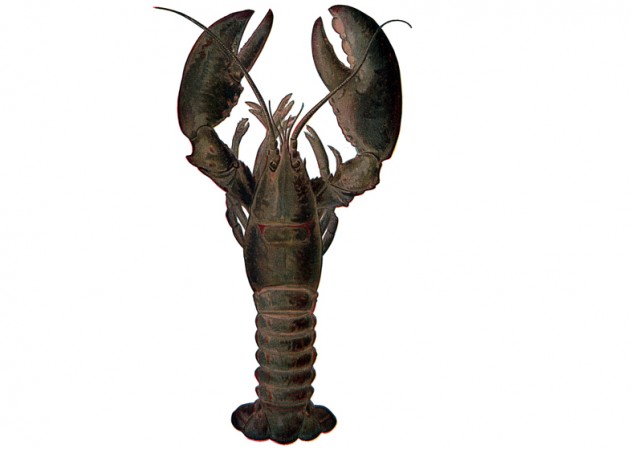Lobsters are invertebrates, and have a tough exoskeleton, which protects them. Like most arthropods, lobsters must molt in order to grow, leaving them vulnerable during this time. During the molting process, several species may experience a change in color.
Lobsters live on rocky, sandy, or muddy bottoms from the shoreline to beyond the edge of the continental shelf. They generally live singly in crevices or in burrows under rocks.
Lobsters typically eat live food, consisting of fish, mollusks, other crustaceans, worms, and some plant life. Occasionally, they will scavenge if necessary and may resort to cannibalism in captivity; however, this has not been observed in the wild. Lobster skin in the stomachs of lobsters has been found before, although this is because lobsters will eat their shed skin after molting.
Lobsters grow throughout their lives and it is not unusual for a lobster to live for more than 100 years (Wallace 2005). They can thus reach impressive sizes. According to the Guinness World Records, the largest lobster was caught in Nova Scotia, Canada and weighed 20.14 kilograms (44.4 pounds).
Being arthropods, lobsters are largely bilaterally symmetrical. Clawed lobsters often possess unequal, specialized claws (chelae), like the king crab. A freshly caught lobster will have a claw that is full and fleshy, not atrophied.
Lobsters have a cephalothorax, which is the head fused with the thorax, both of which are covered by the carapace of chitinous composition. The other major body division is the abdomen. The lobster’s head consists of antennae, antennules, mandibles, the first and second maxillae, and the first, second, and third maxillipeds. Because a lobster lives in a murky environment at the bottom of the ocean, its vision is poor and it mostly uses its antennae as sensors. Studies have shown that the lobster eye is formed with a reflective structure atop a convex retina. In contrast, most complex eyes use refractive ray concentrators (lenses) and a concave retina (Land 1976). The abdomen of the lobster includes swimmerets and its tail is composed of uropods and the telson.
In general, lobsters move slowly by walking on the bottom of the sea floor. However, when they are in danger and need to flee, they swim backwards quickly by curling and uncurling their abdomen. A speed of 5 meters per second has been recorded.
Read more in Spearfishing Regulations Section>>

